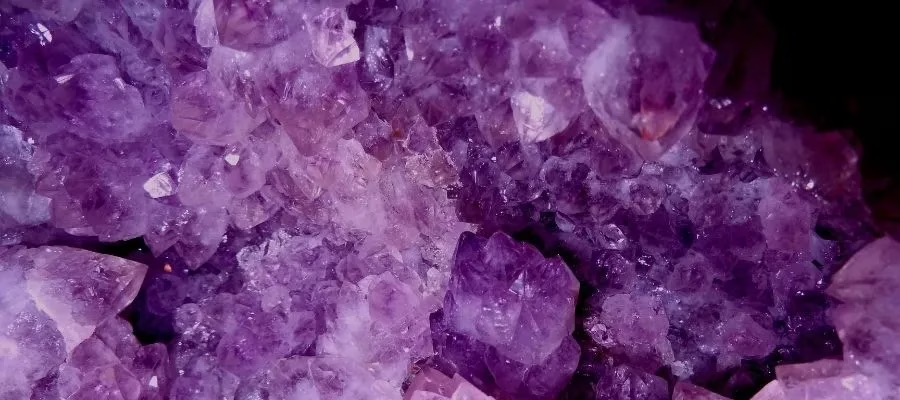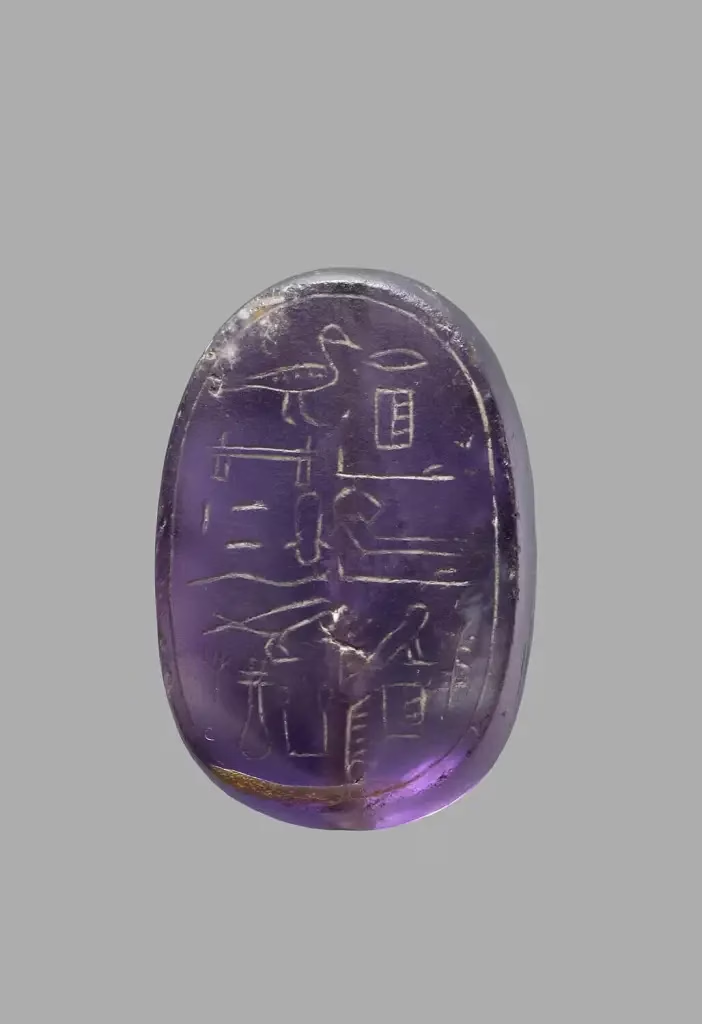Among the most iconic symbols of ancient Egypt, the scarab beetle stands out not only for its form but also for the materials from which it was crafted. One particularly rare example is a scarab made of deep purple amethyst, said to have been discovered in Tomb IV at Jebail (ancient Byblos), Lebanon, as recorded by Montet in 1928. Although Martin (1996) notes that the exact provenance remains uncertain, the artifact itself reveals exceptional artistic and cultural value.
What Is an Amethyst Scarab?
The scarab figure symbolized rebirth, protection, and spiritual transformation in ancient Egyptian culture. While most scarabs were carved from more accessible materials such as steatite, faience, or glazed pottery, a select few were made from amethyst—a gemstone prized for its rarity and spiritual properties.
The Meaning and Power of Amethyst
In ancient Egypt, amethyst held not only visual appeal but was also believed to possess mystical properties:

- It was thought to ward off negative energy,
- It promoted spiritual harmony and healing,
- Its royal purple hue was associated with power, nobility, and sacred rituals.
Often used by the elite, amethyst adorned both jewelry and funerary items, linking the living and the divine.
The Inscribed Message on the Scarab
This specific scarab bears a finely carved inscription featuring the name “Impy”, accompanied by hieroglyphs including the ka sign (life force), nefer (beauty/goodness), and a lotus symbol—each echoing the themes of vitality, grace, and renewal in the afterlife.

Rarity and Archaeological Significance
Compared to scarabs made from common materials, amethyst scarabs are extremely rare, making each surviving example particularly valuable for both archaeologists and historians. Their craftsmanship and symbolism reflect the sophistication of elite burial customs in ancient Egypt.
A Purple Gateway to Eternity
Amethyst scarabs represent a unique blend of material elegance and spiritual depth. This particular piece, carved from a stone once reserved for royalty and sacred rituals, continues to enchant observers millennia later—offering a glimpse into the eternal power of symbolism and craftsmanship.
Cover Photo: Middle Kingdom, 12th Dynasty, ca. 1963-1786 BC. Dimensions: height: 1.73 cm, length: 3.3cm, width: 2.27 cm. Now in the Louvre. E 25729





